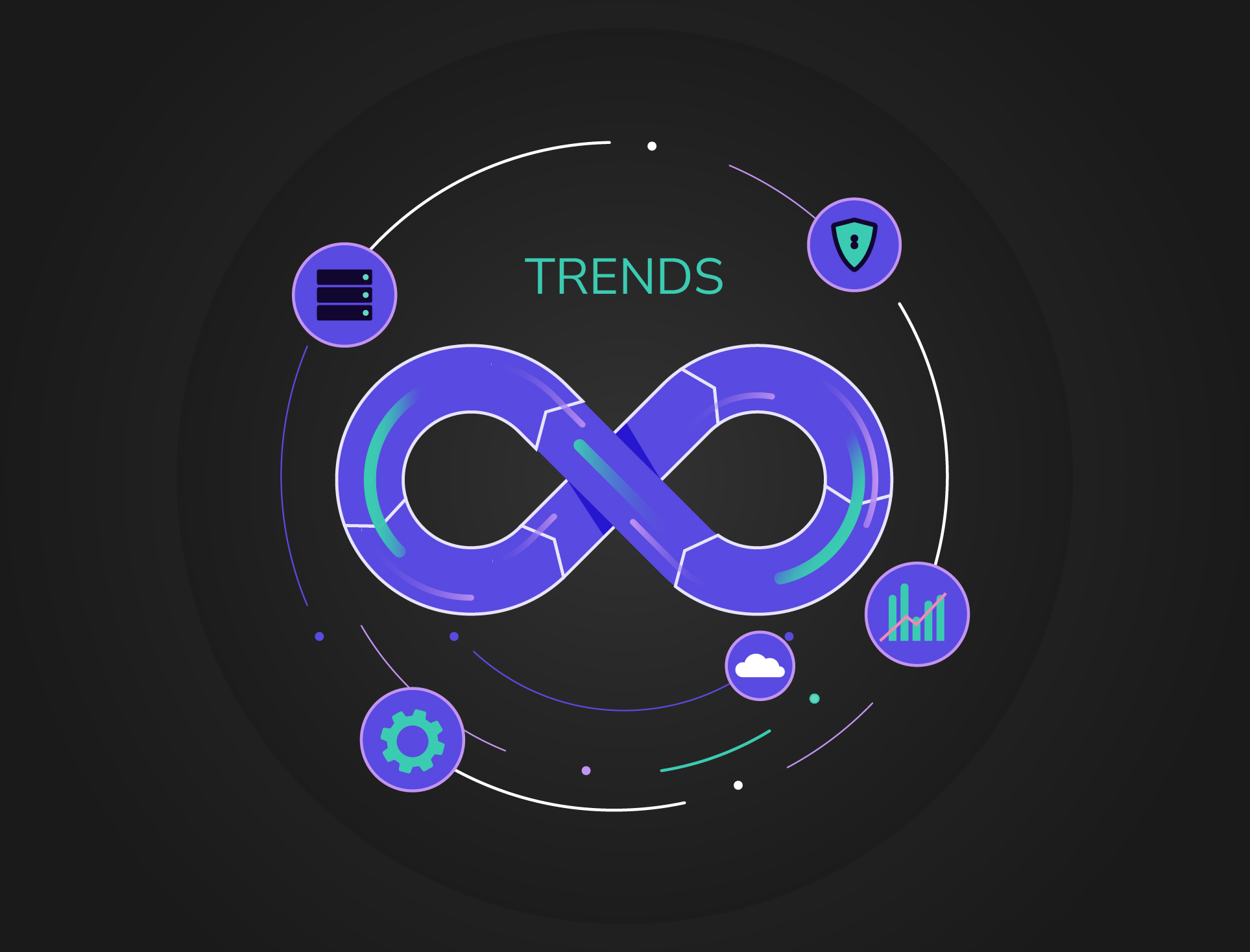Beyond the Buzzwords: Essential DevOps Trends for 2024

In today’s DevOps landscape, much of the spotlight is on AI and DevSecOps as transformative forces, but there are other, equally impactful trends shaping the future of DevOps. This article dives into three pivotal areas that are influencing how DevOps teams operate, streamline processes, and address emerging challenges. By focusing on security, automation, and developer experience, organizations are better positioned to keep pace with technological advancements while maintaining efficiency and agility.
Security First: Policy-Based Management and Infrastructure as Code (IaC)
Security has always been at the forefront for DevOps teams, but in 2024, we’re seeing a distinct shift toward more integrated, automated, and proactive security practices.One such trend is cloud policy management, which leverages providers’ code-based configuration frameworks to secure resources. These frameworks allow teams to configure resources consistently and automatically, reducing the risk of human error and enforcing best practices by default.
Another critical advancement is static code analysis for Infrastructure-as-Code (IaC) templates, which allows teams to catch vulnerabilities early in the lifecycle, well before they reach production. Furthermore, some teams use IaC and cloud policy tools to promote cross-functional collaboration, using audit-mode configurations to warn others of potential security risks. This prevents disruptions often caused by miscommunication between security and development teams.
GitOps: The Future of DevOps Automation
Automation is at the heart of DevOps, and GitOps is now becoming a leading practice in this space. By using Git or similar source control systems to manage workflows, teams can define configurations as code, which are then applied using automation features like GitHub Actions.This approach not only centralizes automation controls, but also provides a single, auditable source of truth. Every change is tracked, simplifying documentation and making it easier to trace issues back to specific actions. GitOps requires a dual focus on IaC and source control expertise.
While this may present a learning curve, organizations that fully embrace GitOps can eliminate many manual processes, achieving an entirely automated DevOps pipeline that spans from code to production.
Prioritizing Developer Experience (DX)
At its core, DevOps is about making software delivery more efficient and predictable, yet it’s ultimately about empowering developers. A strong developer experience (DX) can make a significant impact on productivity and satisfaction.Two key initiatives driving DX are platform engineering and developer self-service. Platform engineering involves dedicated teams focused on areas like network management, security, or specific functions within DevOps. This enables developers to concentrate on their core responsibilities without being burdened by broader operational tasks.
Meanwhile, Internal Development Platforms (IDPs) are making it possible for developers to access infrastructure and environments on-demand, allowing them to be self-sufficient without relying on lengthy procurement processes.
These trends in security, automation, and DX reveal a DevOps landscape evolving beyond the buzzwords, towards a more structured, sustainable, and developer-focused future. By embracing these trends, organizations can adapt their DevOps practices to meet the complexities of modern software development, fostering innovation and resilience along the way.
Security has always been paramount for DevOps teams. But in 2024, we're seeing innovative strategies to enhance application and environment security.
Cloud Policy Management is taking center stage. Teams are leveraging cloud providers' code-based configuration frameworks to configure resources. These configurations are then scanned for security risks, enforcing best practices consistently and automatically. This eliminates reliance on manual policy enforcement and builds in automated "guardrails" for secure cloud governance.
Static Code Analysis of Infrastructure-as-Code (IaC) templates is another growing trend. This identifies security vulnerabilities early in the development lifecycle, similar to cloud policy management for resources.
Additionally, some teams use cloud policy and IaC scanning for collaboration. By using "audit" mode in configuration frameworks, they warn each other about potential security risks from configuration changes. This prevents disruptions caused by miscommunication between security and application teams (the "right hand/left hand" problem).
GitOps is revolutionizing DevOps automation using Git (or similar source control) to manage workflows. Configurations are defined as code and applied through features like GitHub Actions.
This centralizes DevOps automation controls, allowing you to track and manage everything from a single source. This increases efficiency and eliminates issues like conflicting automation versions across individual workstations.
GitOps also boasts a built-in audit trail – every action is logged in the source control system. This comprehensive change documentation eliminates the need for manual documentation (which can be incomplete).
However, GitOps requires expertise in both IaC frameworks and source control. Additionally, some teams rely on manual approvals instead of automated actions within GitOps pipelines, negating the automation benefits.
Through education and embracing full automation (including automated testing of GitOps configurations), these challenges can be overcome. GitOps adoption will continue to rise as teams seek to automate entire DevOps workflows, not just individual processes.
DevOps aims to improve software delivery predictability and efficiency, but ultimately it's about empowering developers. Two key initiatives are driving developer experience (DX):
Platform Engineering: Dedicated DevOps teams focusing on specific functions (like security or network management) support the entire organization. This frees developers from these tasks and cognitive overhead, allowing them to focus on their core competencies. Platform engineering promotes developer specialization, leading to increased productivity and job satisfaction.
Developer Self-Service: Internal Development Platforms (IDPs) provide developers with on-demand access to pre-built infrastructure and software environments. This empowers them to access resources without complex procurement processes.
These trends do have risks. Platform engineering and IDPs require specialized skills, and poor implementations can create more problems than they solve. However, with the right expertise and a well-planned IDP offering the resources developers truly need, frictional roadblocks are reduced, leading to happier and more productive developers.
DevOps discussions often focus on flashy trends like AI. However, the real changes are happening with security, automation, and developer experience. These are also the areas where innovation holds the most potential. By adopting the right tools and techniques in these areas, organizations can ensure they stay ahead of the curve in the ever-evolving DevOps landscape.
